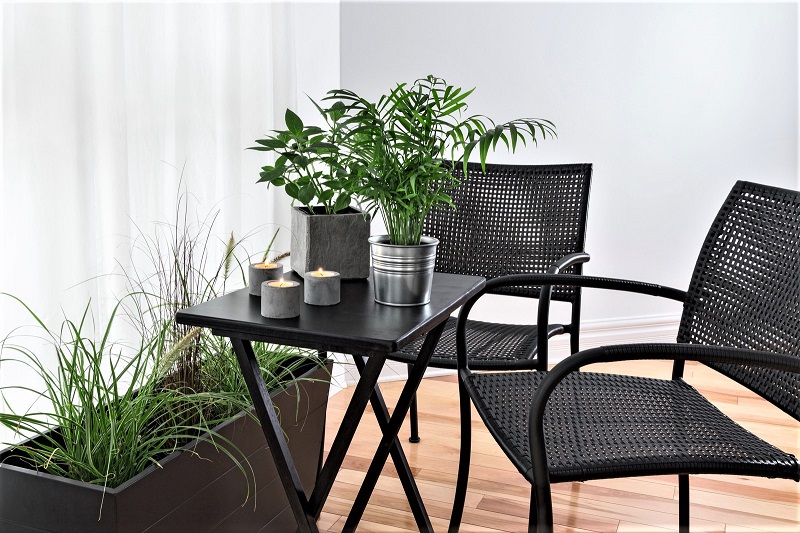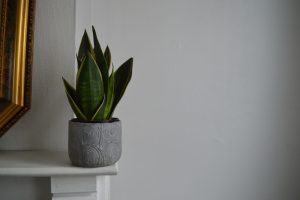While some might consider indoor gardening inferior to growing vegetables and flowers outdoors, that’s not necessarily true for all gardening enthusiasts.
Yes, a great many gardeners out there enjoy the benefits of growing plants on a substantial outdoor space. But people who only have access to window sills outnumber them by a huge margin.
The fact is that gardening enthusiasts who raise plants indoors enjoy certain advantages. You control the seasons when you grow indoors. If you want fresh vegetables year-round, you simply stagger the times when you start a new crop.
You can also use grow lights and environmental controls, like heaters, humidifiers, and irrigation, to permit your plants the best conditions under which to produce fruit.
This means you can enjoy your indoor garden all year long – even during the dead of winter. You also have less to worry about in terms of water waste.
Pest Control for Houseplants
However, there is an essential aspect to gardening that can prove enormously difficult indoors, and that’s pest control. While an indoor environment does protect plants from various external threats, these same conditions can spell disaster when pests do manage to attach themselves to your houseplants.
For instance, if aphids, whiteflies, or thrips arrive undetected with a new plant purchase, you’ll soon see the pests spreading to all other plants in your house. In a stable, warm, indoor climate with an ample source of food and no predators, pest populations can explode.
You’ll likely notice the damage caused by aphids just by looking at your plants. The afflicted plants may wither with curled or deformed new growth.
In that case, you’ll probably find dense congregations of the tiny insects on the leaf tips. Aphids have soft, sometimes translucent oval-shaped bodies.
The damage caused by thrips is similar to that of spider mites, leaving plants wilted with spotted or streaked leaves. These insects are barely visible, resembling tiny shards or slivers ranging in color from translucent white or yellow to dark brown or black.
Though thrips and their larvae can be extremely difficult to see with the naked eye, you can usually notice their presence by their droppings. These appear as little black dots on and around your plant.
Whiteflies are another common indoor plant pest. These insects look exactly like their name: tiny gnat-like white flies that move in little swarms around your plants. The leaves they infest are often pale and limp.
To get rid of aphids, whiteflies, and thrips, prune off any badly infested stems. Use a sink sprayer to knock as many of the insects off your plant as possible.
Be careful that you do not damage your plant with an excessively powerful blast of water, though. Do not miss any leaf axils or undersides.
Repeat this process every few days. You can also use neem oil to further reduce aphid, whitefly, and thrip populations in your indoor plants.

Taking the Necessary Precautions
There are countless other pests out there, of course. Your indoor plants are vulnerable to all but a few of the same pests that trouble plants in outdoor gardens. This is especially true for any plants you purchase from your local garden centers.
The botanist, James Wong, suggests that this is because growers in the Netherlands, who supply a considerable chunk of the market, have reduced their use of pesticides. While this is good for the environment, it also means many of the plants sold in garden centers now come with their own pests in tow.
Fortunately, you can still prevent an indoor infestation – and reduce the risk of an unmanageable outbreak – with proper quarantine practices.
Plant quarantines are a standard protocol in all the big botanic gardens and commercial farms. Quarantining plants in your own home takes no more than five minutes of work.

How to Quarantine New Houseplants
The first step is to carefully inspect new plants for signs of pests and disease. You don’t have to be an expert to do this. Like whiteflies, aphids, and thrips, most other plant pests reveal their presence with easily identifiable tell-tale signs.
Simply check for any new growth that is contorted, mottled, or yellow. You should undertake this inspection before the plants enter your home. Give your planned purchase a thorough examination at the nursery or garden center. If in doubt, do not buy the plant.
Once in your home, place your new plant in a separate room. That might be a problem for people who live in small apartments. But even a six-foot distance will make a difference.
Wong suggests that you spritz the plant with a commercial plant invigorator. These often contain low levels of innocuous, mild detergents, which should kill any pests that might have gone unnoticed during your inspection.
Keep the plant in quarantine for two weeks. If your new plant remains free of symptoms of pest infestation during that stretch of time, then you can introduce it to the rest of your indoor garden.
If you’ve bought an infested plant from an online seller, snap some pictures and contact the supplier immediately.









